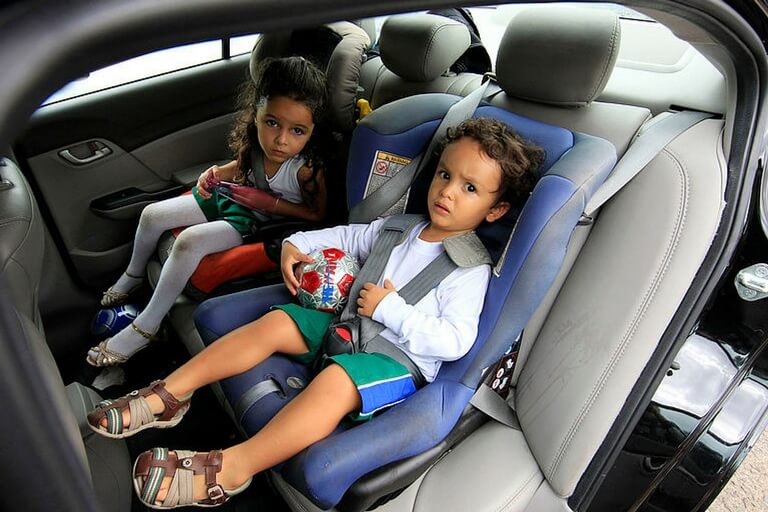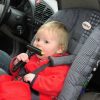One of the most amazing (if not the most) things that can happen to anyone is becoming a parent. It’s gratifying and will change your life in so many ways that you didn’t even think were possible. For this reason, we do our best to prepare for this extraordinary and wonderful event.
Such preparations include baby-proofing the house, getting the perfect crib for your little one to sleep on, shopping for baby clothes, and the list goes on and on. These things are essential alright; however, you have to make sure that you prepare your car, too.
You’ll be out and about with your new bundle of joy as soon as you are out of the hospital and that’s just the start of it. Moving forward, your little angel will be with you in almost all of your travels. Be it a visit to grandma and grandpa, frequent shopping, going on vacation, etc. — you will be using your car with your baby as your most precious passenger.
That’s the reason why it’s equally important and crucial to get the car ready for the baby. It’s not only to ensure that he or she is comfortable while you travel but also to keep your bundle of joy safe from harm.
So how exactly do you do that? Read on to find out.
Clean And Declutter The Car
Tidying up is the first step towards getting the car ready for your baby. The exterior of the vehicle may need pressure washing, but cleaning the interior should be a top priority, too. After all, you wouldn’t want your little one to be spending time inside a filthy car.
Besides, research released by the University of Nottingham has found out a very alarming finding. According to the study, more than half of cars are potentially keeping deadly bugs like E.coli and Methicillin-resistant Staphylococcus aureus (MRSA). All the more reason why you should clean your car.
Lucky you, it’s not so hard a task to clean the insides of your car. Here’s how you can do it:
- Use a foam or paint brush to dust the AC vents. As you brush the dust off, use a vacuum, so it doesn’t get somewhere else inside the car.
- Clean the knobs and other buttons using the same vacuum-plus-brush combo.
- Remove and replace your cabin air filter provided that it’s removable (check your owner’s manual). In general, cabin air filters should be replaced once a year. But if you live in a dusty area, you may need to replace it more often.
- Remove animal hair (if you have pets), with a spray bottle of water and a squeegee.
- Scrub the dirt off of your vinyl using a toothbrush and diluted all-purpose cleaner. Use this solution as well to clean the seats of your car but this time, use a scrub brush and washcloths.
- Don’t forget the seams of your seat cushions. Dirt and crumbs may have accumulated in these areas but using a fine-bristled brush should do the trick.
- Throw the dirty floor mats in the washing machine but do spray them with stain remover before doing so.
Finally, declutter and remove anything unnecessary inside the car to free up some space, especially for installing your child’s car seat. More importantly, any trash that’s left can become a dangerous projectile in the event of an accident.
Once done, maintain the freshness of your car’s interior. While chemical air fresheners are very common, these things are not good for the health. An excellent alternative would be to use a DIY car air freshener recipe made from baking soda and essential oils of your choice.
Choosing The Right Car Seat
In 2015, 663 children ages 12 and below died in vehicular accidents in the US. What‘s even more alarming is that 35% of those children who died were not buckled up. Furthermore, one study made by the Centers for Disease Control and Prevention (CDC) found that there were 618,000 children ages 0-12 who are not using any safety seat at least some of the time.
Different states in the US have varying laws regarding the usage of car seats. However, one thing remains the same — a child needs to be in a safety car seat while inside a vehicle. There’s no arguing around the fact that it is the safest place for a child to be in.
There are so many different options available when choosing car seats for children. For instance, the best car seat for a one-year-old is still an infant car seat. You can use most of these seats until your little one is two years of age.
And the good news is that all car seats, regardless of the type (rear-racing, front-facing, convertible, booster seats), are all safe. They wouldn’t be sold in the market if they didn’t pass the necessary quality and safety tests. If anything, what you have to focus on is how well the car seat fits in your vehicle, its size and weight, and the ease of installation.
Remember this: any car seat, when installed or misused, will do more harm than good. If you’re unsure, it’s always better to have your car seat inspected. Certified technicians will be more than glad to inspect and teach you how to properly use your car seat. Best of all, it’s free of charge most of the time!
And one more thing. Car seats do expire, so it’s important to make yourself aware of how long car seats are good for.
Protect Your Baby From The Sun
Tinting your car windows is an excellent way to keep the sun’s harmful UV rays at bay. It also helps in cooling the temperature inside your car under the scorching heat of summer. Another benefit of tinting your car windows is that it adds an extra layer of privacy — perfect for when you need to breastfeed your little one.
Window tint come in different levels of darkness. Basically, the darker the tint, the more UV protection it offers. Ultimately, more privacy is provided since it would be harder for people from the outside to see the insides of the car.
Keep in mind, however, that different states have different laws to regulate window tint levels. So before you proceed, see to it that you’re not violating any law especially if you’ll be going to a different state.
Applying tint to your car be a DIY job but it can be challenging, and you may end up with air bubbles. If you’re not confident that you’d be able to accomplish the task well enough, you can always hire a professional window tinting service. You can also consider installing sun shades as an alternative although it doesn’t offer as much privacy.
Keep A Stock Of Baby Essentials
Being a parent means being prepared for anything. That includes being on the road with your bundle of joy. It’s no longer just about you, but above all, it’s now about your child. Make sure that you’ll be able to meet the needs of your precious angel especially if you’re traveling on a long trip.
As much as you’d like to, unexpected situations can and will happen. A stock of essentials should always be present in your car. The first thing that you need to have in your vehicle is a first-aid kit for the baby.
Other than that, have extra clothes for you (spit-ups are inevitable) and your baby. Baby wipes and diapers should also be on the list while toys and snacks are for when the tiny passenger gets fussy.
And although having a stroller in your car might sound inconvenient, it will come in handy for sure. In fact, car seats go hand-in-hand with strollers in almost all of the time that you’re on the road. Admit it, carrying a baby for long periods of time is tiring and it doesn’t give you the freedom to do anything else.
With a stroller, walking your baby is going to be a lot easier. If yours is a small car, you should consider a car seat stroller combo instead. Most of these systems come with stroller frames that are compact and easy to store while the car seat itself, sits on the rear passenger seat.
Make 100% Sure Your Car Is Well-Maintained
No matter how confident you are in your driving skills, you’re not going to be safe unless your vehicle is well-maintained. If it’s not, you’re putting you and your baby at risk should your car fail which can lead to a serious accident.
Familiarize yourself with the basics of vehicle safety maintenance. All the parts and systems inside your car need to be in tip-top shape to ensure that they are working correctly. See to it that you not only read but also understand the owner’s manual of your car.
Aside from maintenance, you also need to always have more than half a tank of gas in your car. The last thing you want to do is stopping for gas or worse, the car breaking down, in case of an emergency.


